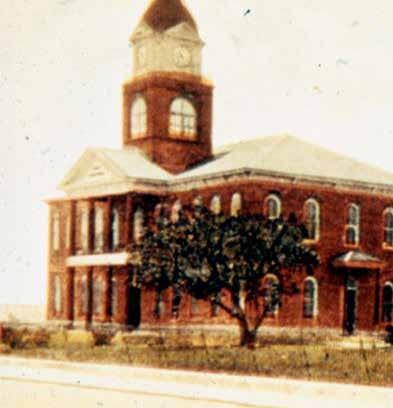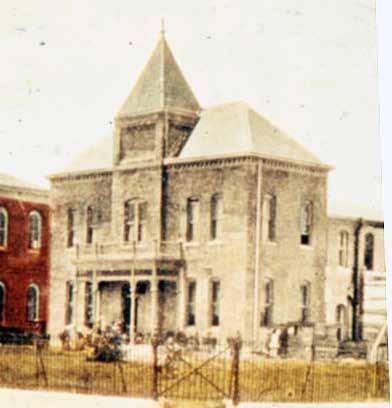
5 minute read
County Historic Properties & Museums
TAKE A STEP BACK IN TIME
Monroe County owns and maintains multiple historic properties, four of which have been developed into museums. Some of the historic properties maintained by the County include the 1890 Courthouse in Key West, the 1916 Gato Cigar Factory in Key West, the 1914 Truman School now serving the public as the Harvey Government Center in Key West, the 1892 Key West Sheriff Residence and Jail, and the 1936 Tavernier School.
Advertisement
Museum locations include Pigeon Key, a small island two miles offshore of Marathon, the Key West Lighthouse and Keeper’s Quarters, and the East and West Martello Civil War Forts.
PIGEON KEY
While Henry Flagler was building the Oversea Railway to Key West in the early 1900s, more than 400 workers lived in the railroad village on Pigeon Key, located in the path of the Old Seven Mile Bridge. Pigeon Key had a post office, commissary and one-room school while the bridge was being built from 1908 to 1912.
When a hurricane destroyed the railway in 1935, Pigeon Key became the headquarters for the Florida Road and Toll Bridge District. Starting in 1968, the island served for 20 years as an environmental field station for international researchers studying tropical marine and island ecologies with the University of Miami. In 1993, the Pigeon Key Foundation assumed stewardship and began restoration efforts to turn it into a museum.
In 2017, Hurricane Irma caused substantial damage to the 1912 Commissary and the 1940 Honeymoon Cottage knocking both structures off their foundations. In 2018, the Pigeon Key Foundation asked the County to manage the repair and restoration of these two buildings. Shoring, repair, and construction began in early 2020 and will take two years to complete.
EAST AND WEST MARTELLO CIVIL WAR FORTS
In 1822, the U.S. Navy surveyed sites for a fort to command the harbor in Key West. In 1836, the U.S. Army and a French military engineer drew up plans for a set of nine forts to command Key West harbor. The high cost led to revising the plan to just Fort Zachary Taylor and two advanced batteries, the East and West Admission for the Fort Martello Towers. East Martello Museum is $12 for adults, $5 The two towers built in the mid- for children (6 and up), 1860s on what is now South children under 6 are Roosevelt Boulevard were never free, $5 for students armed or involved in a battle. with ID, free for Monroe They were used during the County students, and Spanish American War in 1898 $9 for Monroe County for quartering troops and from residents and seniors 1914-44, they were used for ra- 62 and older. dio stations and an anti-aircraft www.kwahs.org. battery on the beach.
In 1947, the Army-owned towers became the property of Monroe County. The West Tower had become an eyesore to the shoreline with pressure in 1949 to demolish it and put in a new beach area. County Commissioner Joe Allen convinced the County Commission to stop the demolition.
PIGEON KEY FERRY
The ferry makes daily departures at 10 a.m., noon and 2 p.m. from Pigeon Key Visitor’s Center, 2010 Overseas Highway in Marathon. The ferry cost includes historical tour and island access. $12 per person. Monroe County residents $9. Children under 5 are free. For more information, call 305-743-5999 or visit www.pigeonkey.net. The Key West Garden Club entered into a land-lease agreement with the County. The West Tower was declared a National Historic Site by the State of Florida in 1976 and is listed in the National Register of Historic Places.
The Key West Art & Historical Society restored the East Tower and opened Fort East Martello Museum in 1950 as the first museum in the Keys.

In 1972, it was added to the U.S. National Register of Historic Places. The museum now houses the imaginative metal sculptures of Stanley Papio and Robert the Doll, a supposedly haunted doll belonging to the late artist Robert Eugene Otto.
In 2018, the County started restoration of the historic brick at both the East and West Martello that will continue through 2021. East Martello also is receiving drainage upgrades, road and parking repairs, and new roofing, which was completed in 2019. Funding was provied by the Monroe County Tourist Development Council.
KEY WEST LIGHTHOUSE AND KEEPERS’ QUARTERS MUSEUM
After the first Key West Lighthouse was destroyed in an 1846 hurricane, a new lighthouse that stood 50 feet tall was constructed. In 1894, the growth of trees and taller buildings in Key West led to it being raised so the light was about 100 feet above sea level.
Admission for the Lighthouse, at 938 Whitehead Street, is $12 for adults, $5 for children (6+), children under 6 are free, $5 for students with ID, free for Monroe County students, and $9 for Monroe County residents and seniors 62 and older. www.kwahs.org. The Coast Guard decommissioned the Key West Lighthouse in 1969 and it was turned over to Monroe County. The County leases it to the Key West Art & Historical Society as a museum. One item on display is the first-order Fresnel lens from Sombrero Key Lighthouse.
Future plans include the restoration of the Oil House into exhibition space, which will display how the lighthouse was fueled.
1892 KEY WEST JAIL RESTORATION MUSEUM PROJECT TO START IN EARLY 2020
Monroe County Project Management will start the restoration of the 1892 Key West Jail in early 2020. The first phase includes roof replacement, door and window restoration, and spalling repairs. In the second phase, non-historic features of the building will be removed and fire protection, required ADA access, restrooms, and museum facilities will be added. The tentative opening date is in 2022. To read the full historical structure report, visit www.monroecounty-fl.gov/keywestjail.
A CONDENSED HISTORY OF THE KEY WEST JAIL
The 1892 jail had been specifically designed to mimic the Monroe County Courthouse, built just two years earlier. Both the jail and courthouse were considered impressive civic accomplishments, and symbols of Monroe County’s position as the most populous city in Florida at that time with the U.S. Census showing more than 18,000 citizens in Key West.
The 1892 jail was the fifth jail built at the historic Jackson Square. In 1907, a 10-foot high concrete wall was built around the jail and in 1910 the jail was expanded to increase capacity with a two-story concrete cell block.
In 1952, the front of the old jail was demolished and replaced with a new jail and office for the Monroe County Sheriff. In 1965, the sheriff’s office was replaced with a courthouse annex. This annex was expanded in the 1980s. At that time, the north section of the 1907 wall was removed. Today, only the rear portion of the 1892 building remains, along with the entire 1910 addition and the 1910 cell block.









